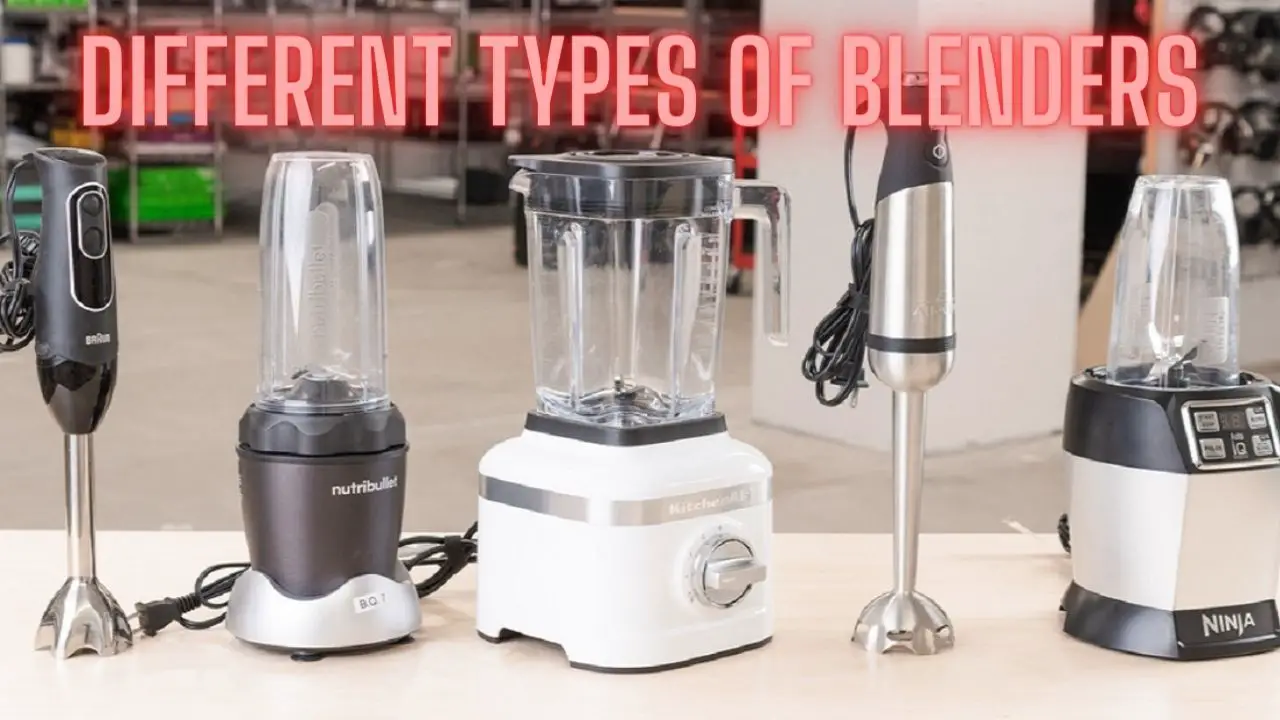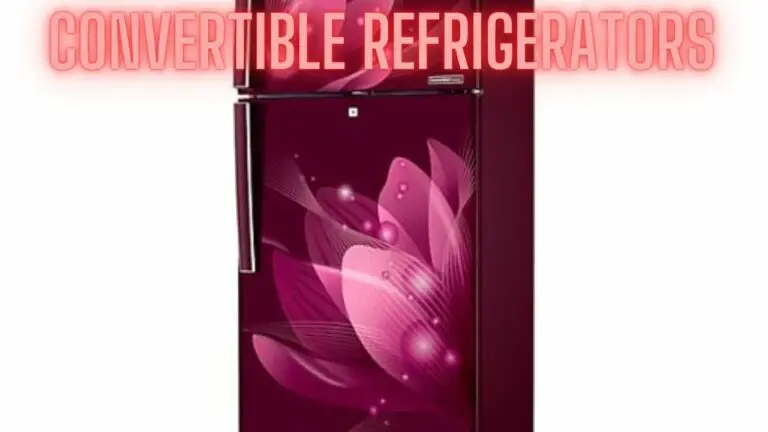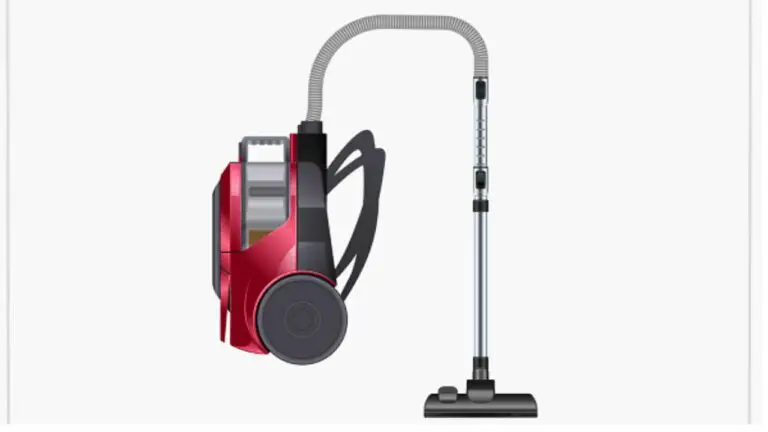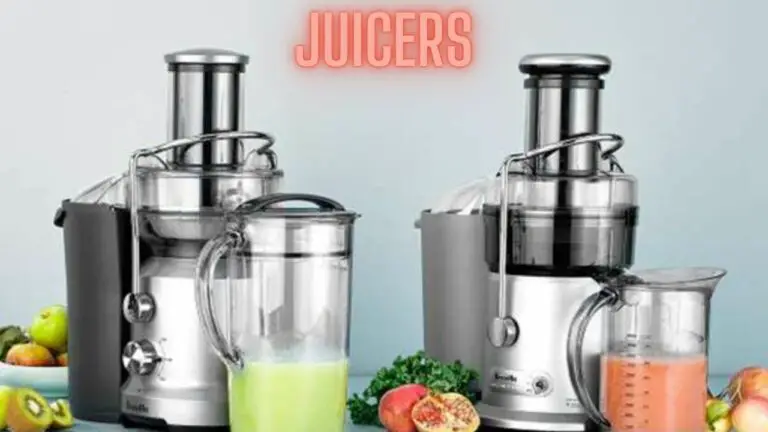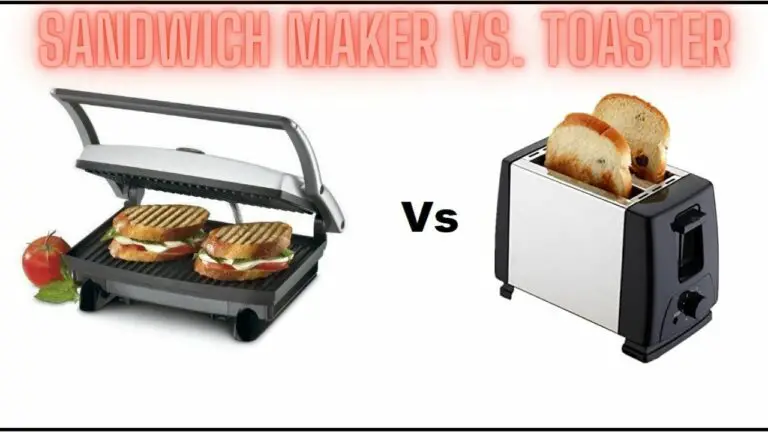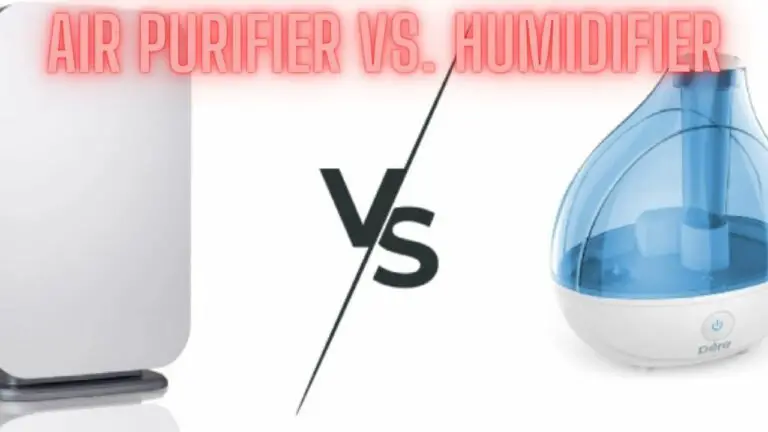Different Types of Blenders: A Deep Dive into Blending Excellence
Introduction
Blenders are versatile kitchen appliances designed to simplify food preparation tasks by blending, mixing, pureeing, and liquefying ingredients quickly and efficiently. From smoothies and soups to sauces and dips, blenders offer endless possibilities for creating delicious and nutritious recipes.
In this guide, we’ll explore the different types of blenders available on the market, each tailored to meet specific needs and preferences. Whether you’re a home cook looking for a compact personal blender or a professional chef in need of a high-performance commercial blender, there’s a blender type suitable for every kitchen and culinary application.
Join us as we delve into the features, functionalities, and advantages of various blender types, helping you find the perfect blender to elevate your cooking experience and achieve culinary perfection.
Basic Functionality of Blenders
Blenders are versatile kitchen appliances that serve various purposes in food preparation. Here’s a breakdown of their basic functionality:
- Blending: The primary function of blenders is to blend ingredients together to create smooth and homogeneous mixtures. This can include blending fruits and vegetables to make smoothies, pureeing soups and sauces, or mixing ingredients for batters and doughs.
- Mixing: Blenders are also capable of mixing ingredients together to combine them evenly. This is particularly useful for mixing wet and dry ingredients for baking, creating salad dressings, or blending marinades.
- Pureeing: Blenders are equipped with powerful blades that can puree cooked or soft ingredients into a smooth consistency. This is commonly used for making baby food, pureed soups, or sauces.
- Liquefying: Blenders have the ability to liquefy ingredients by breaking them down into a liquid state. This is useful for making smoothies, milkshakes, cocktails, and other beverages.
- Crushing Ice: Many blenders are equipped with strong blades and motors that can crush ice cubes to create crushed ice for drinks or to incorporate into frozen desserts.
- Grinding: Some blenders come with grinding attachments or blades that allow them to grind ingredients such as nuts, spices, or coffee beans into a fine powder or paste.
- Emulsifying: Blenders can emulsify ingredients by combining oil and water-based ingredients to create stable emulsions such as mayonnaise or salad dressings.
Overall, the basic functionality of blenders revolves around their ability to blend, mix, puree, liquefy, and process ingredients quickly and efficiently, making them indispensable tools in the kitchen for a wide range of cooking and baking tasks.
Countertop Blenders
Countertop blenders, also known as traditional or standard blenders, are versatile kitchen appliances designed to sit on countertops and handle a wide range of blending tasks. Here’s an overview of countertop blenders:
- Design: Countertop blenders typically feature a sturdy base with a motor, controls, and a removable pitcher or jar made of glass, plastic, or stainless steel. The pitcher usually has a lid with a removable center cap for adding ingredients while blending.
- Power: Countertop blenders are equipped with powerful motors ranging from 300 to 1500 watts or more, depending on the model. Higher wattage motors are capable of blending tougher ingredients such as frozen fruits, vegetables, and ice with ease.
- Blades: Countertop blenders have sharp, stainless steel blades attached to the base of the pitcher. These blades are designed to blend, chop, and pulverize ingredients quickly and efficiently. Some blenders feature removable blades for easier cleaning.
- Controls: Countertop blenders come with various speed settings and blending modes to customize blending tasks according to the desired texture and consistency of the ingredients. Some models also feature pre-programmed settings for specific tasks such as smoothies, soups, or ice crushing.
- Capacity: Countertop blenders are available in a range of sizes, with pitcher capacities typically ranging from 32 ounces to 72 ounces or more. Larger pitchers are ideal for blending larger batches of ingredients or for serving multiple people.
- Versatility: Countertop blenders are versatile appliances that can handle a wide range of blending tasks, including making smoothies, soups, sauces, dips, dressings, batters, and more. They can also crush ice and grind ingredients such as nuts and spices.
- Ease of Use and Cleaning: Countertop blenders are generally easy to use, with simple controls and intuitive operation. Many models feature dishwasher-safe pitcher and lid components for easy cleaning.
- Price: Countertop blenders are available at various price points to suit different budgets. Basic models with fewer features may be more affordable, while high-end models with advanced features and powerful motors may be more expensive.
Overall, countertop blenders are essential kitchen appliances that offer convenience, versatility, and performance for a wide range of blending tasks. Whether you’re making morning smoothies, pureeing soups, or blending sauces, a countertop blender is a versatile tool that can handle it all with ease.
Immersion Blenders
Immersion blenders, also known as hand blenders or stick blenders, are versatile kitchen appliances designed for blending ingredients directly in pots, bowls, or other containers. Here’s an overview of immersion blenders:
- Design: Immersion blenders consist of a handheld motor unit with a built-in electric motor and a removable blending shaft with blades at the end. The motor unit typically features speed controls and may include additional attachments for different blending tasks.
- Versatility: Immersion blenders are highly versatile and can be used for a wide range of blending tasks, including blending soups, sauces, smoothies, baby food, purees, and more. They can also be used to emulsify ingredients for salad dressings and mayonnaise.
- Ease of Use: One of the main advantages of immersion blenders is their ease of use. They are lightweight and easy to maneuver, allowing users to blend ingredients directly in the cooking vessel without the need to transfer them to a separate blender pitcher.
- Space-Saving: Immersion blenders are compact and take up minimal space in the kitchen. Unlike countertop blenders, they can be easily stored in a drawer or cabinet when not in use, making them ideal for small kitchens or limited storage spaces.
- Blending Shaft: The blending shaft of an immersion blender is typically made of stainless steel and is removable for easy cleaning. Some models feature interchangeable blending shafts of different lengths or materials to accommodate various blending tasks.
- Speed Controls: Most immersion blenders come with variable speed controls or multiple speed settings to adjust the blending speed according to the desired texture and consistency of the ingredients.
- Attachments: Many immersion blenders come with additional attachments such as whisk attachments for whipping cream or egg whites, chopper attachments for chopping nuts or herbs, and frother attachments for frothing milk or making whipped cream.
- Cleaning: Immersion blenders are easy to clean, with most models featuring detachable blending shafts and dishwasher-safe attachments. Simply detach the blending shaft and rinse it under running water or place it in the dishwasher for easy cleanup.
- Price: Immersion blenders are available at various price points to suit different budgets. Basic models with fewer features may be more affordable, while high-end models with additional attachments and variable speed controls may be more expensive.
Overall, immersion blenders are versatile and convenient kitchen appliances that offer quick and efficient blending performance for a wide range of cooking tasks. Whether you’re blending soups, sauces, or smoothies, an immersion blender is a handy tool that can streamline your cooking process and save you time and effort in the kitchen.
Personal Blenders
Personal blenders are compact and portable kitchen appliances designed for individual use, making them ideal for blending single servings of smoothies, shakes, and other beverages. Here’s an overview of personal blenders:
- Compact Design: Personal blenders are smaller in size compared to traditional countertop blenders, with a compact design that takes up minimal space on countertops or in cabinets. They are lightweight and easy to transport, making them perfect for on-the-go use.
- Single-Serve Blending: Personal blenders are specifically designed for blending single servings of beverages, eliminating the need for larger blender pitchers. The blending container doubles as a travel cup, allowing users to blend and drink their smoothie or shake directly from the same container.
- Blending Power: Despite their compact size, personal blenders are equipped with powerful motors capable of blending fruits, vegetables, ice, and other ingredients into smooth and creamy beverages. The blending blades are designed to pulverize ingredients quickly and efficiently.
- Simple Operation: Personal blenders typically feature one-touch operation or simple push-button controls for easy blending. Users can simply add their ingredients to the blending container, attach the blade assembly, and blend with the press of a button.
- Portability: One of the main advantages of personal blenders is their portability. The blending container doubles as a travel cup with a spill-proof lid, allowing users to blend their beverages and take them on the go without the need for additional containers.
- Easy Cleanup: Personal blenders are easy to clean, with most models featuring dishwasher-safe blending containers and lids. Users can simply rinse the blending container and blade assembly under running water or place them in the dishwasher for hassle-free cleanup.
- Versatility: While personal blenders are primarily designed for making smoothies and shakes, they can also be used for blending other beverages such as protein shakes, fruit juices, and iced coffees. Some models may also come with additional accessories or attachments for chopping, grinding, or mixing.
- Affordability: Personal blenders are generally more affordable than larger countertop blenders, making them an attractive option for budget-conscious consumers looking for a convenient and efficient way to blend single servings of beverages.
Overall, personal blenders are convenient and versatile kitchen appliances that offer quick and easy blending for individuals on the go. Whether you’re blending a morning smoothie before heading to work or mixing up a post-workout protein shake, a personal blender is a handy tool that can simplify your daily routine.
High-Performance Blenders
High-performance blenders are heavy-duty kitchen appliances designed to blend ingredients with exceptional power, speed, and precision. Here’s an overview of high-performance blenders:
- Powerful Motor: High-performance blenders are equipped with robust motors ranging from 1000 to 2000 watts or more, providing superior blending power and performance. The high wattage motors can effortlessly blend tough ingredients such as frozen fruits, vegetables, nuts, and ice.
- Durable Construction: High-performance blenders feature durable construction with heavy-duty materials such as stainless steel, reinforced plastics, and metal drive systems. This ensures the blender’s longevity and durability, even with frequent use.
- Blade Design: High-performance blenders are equipped with ultra-sharp blades made of hardened stainless steel, capable of pulverizing ingredients into a smooth and creamy consistency. The blade design and configuration may vary among models, with some featuring multi-tiered or angled blades for more efficient blending.
- Variable Speed Control: Most high-performance blenders come with variable speed control settings, allowing users to adjust the blending speed to achieve the desired texture and consistency. Some models may also feature pre-programmed settings for specific tasks such as smoothies, soups, or nut butter.
- Large Capacity: High-performance blenders typically come with large-capacity blending containers ranging from 64 to 90 ounces or more. The spacious containers allow users to blend large batches of ingredients for smoothies, soups, sauces, and other recipes.
- Versatility: High-performance blenders are versatile appliances capable of handling a wide range of blending tasks, including making smoothies, soups, sauces, nut butter, ice cream, and more. They can also crush ice and grind ingredients such as nuts, seeds, and grains.
- Tamper Tool: Many high-performance blenders come with a tamper tool, a handy accessory that helps push ingredients down towards the blades for more efficient blending. The tamper tool is especially useful for thick or frozen ingredients that may get stuck during blending.
- Noise Level: Due to their powerful motors and high-speed blending capabilities, high-performance blenders may produce more noise compared to standard blenders. However, some models are designed with noise-reducing features to minimize disruption during blending.
- Price: High-performance blenders are typically priced higher than standard blenders due to their advanced features, powerful motors, and durable construction. While they may represent a higher initial investment, their performance, durability, and versatility justify the cost for many users.
Overall, high-performance blenders are top-of-the-line kitchen appliances that offer exceptional blending power, versatility, and durability. Whether you’re a home cook looking to elevate your culinary creations or a professional chef in need of a reliable blending solution, a high-performance blender is a valuable tool that can handle even the toughest blending tasks with ease.
Commercial Blenders
Commercial blenders are heavy-duty kitchen appliances designed for high-volume blending in commercial settings such as restaurants, cafes, bars, smoothie shops, and foodservice establishments. Here’s an overview of commercial blenders:
- Heavy-Duty Construction: Commercial blenders are built with heavy-duty materials such as stainless steel, reinforced plastics, and metal drive systems to withstand the rigors of commercial use. They are designed to withstand frequent blending cycles and heavy loads without overheating or breaking down.
- Powerful Motor: Commercial blenders are equipped with robust motors ranging from 1500 to 3000 watts or more, providing superior blending power and performance. The high wattage motors can effortlessly blend large quantities of ingredients, including ice, frozen fruits, vegetables, and nuts.
- Large Capacity: Commercial blenders come with large-capacity blending containers ranging from 64 to 128 ounces or more, allowing users to blend large batches of ingredients at once. The spacious containers are ideal for preparing multiple servings of smoothies, soups, sauces, and other recipes.
- Variable Speed Control: Most commercial blenders feature variable speed control settings, allowing users to adjust the blending speed to achieve the desired texture and consistency. Some models may also offer pre-programmed settings for specific tasks such as smoothies, soups, or frozen drinks.
- Tamper Tool: Many commercial blenders come with a tamper tool, a handy accessory that helps push ingredients down towards the blades for more efficient blending. The tamper tool is especially useful for thick or frozen ingredients that may get stuck during blending.
- Versatility: Commercial blenders are versatile appliances capable of handling a wide range of blending tasks, including making smoothies, soups, sauces, dips, dressings, nut butter, and more. They can also crush ice and grind ingredients such as nuts, seeds, and grains.
- Durability and Reliability: Commercial blenders are built to last and are designed for continuous use in demanding commercial environments. They are engineered for reliability, durability, and performance, making them an essential tool for busy commercial kitchens.
- Safety Features: Many commercial blenders come with safety features such as overload protection, thermal protection, and safety interlock systems to prevent overheating and ensure safe operation during blending.
- Noise Level: Commercial blenders may produce more noise compared to residential blenders due to their powerful motors and heavy-duty construction. However, some models are designed with noise-reducing features to minimize disruption in busy commercial settings.
- Price: Commercial blenders are typically priced higher than residential blenders due to their advanced features, powerful motors, and durable construction. While they may represent a higher initial investment, their performance, reliability, and longevity justify the cost for commercial users.
Overall, commercial blenders are essential kitchen appliances for businesses in the foodservice industry, offering unmatched blending power, capacity, versatility, durability, and reliability for high-volume blending operations. Whether you’re blending smoothies, soups, or cocktails, a commercial blender is a valuable tool that can help streamline your workflow and meet the demands of your customers.
Handheld Blenders
Handheld blenders, also known as immersion blenders or stick blenders, are versatile kitchen appliances designed for blending ingredients directly in pots, bowls, or other containers. Here’s an overview of handheld blenders:
- Design: Handheld blenders consist of a motor unit with a built-in electric motor and a removable blending shaft with blades at the end. The motor unit typically features speed controls and may include additional attachments for different blending tasks.
- Versatility: Handheld blenders are highly versatile and can be used for a wide range of blending tasks, including blending soups, sauces, smoothies, baby food, purees, and more. They can also be used to emulsify ingredients for salad dressings and mayonnaise.
- Ease of Use: One of the main advantages of handheld blenders is their ease of use. They are lightweight and easy to maneuver, allowing users to blend ingredients directly in the cooking vessel without the need to transfer them to a separate blender pitcher.
- Space-Saving: Handheld blenders are compact and take up minimal space in the kitchen. Unlike countertop blenders, they can be easily stored in a drawer or cabinet when not in use, making them ideal for small kitchens or limited storage spaces.
- Blending Shaft: The blending shaft of a handheld blender is typically made of stainless steel and is removable for easy cleaning. Some models feature interchangeable blending shafts of different lengths or materials to accommodate various blending tasks.
- Speed Controls: Most handheld blenders come with variable speed control settings, allowing users to adjust the blending speed to achieve the desired texture and consistency. Some models may also feature turbo or pulse settings for extra blending power.
- Attachments: Many handheld blenders come with additional attachments such as whisk attachments for whipping cream or egg whites, chopper attachments for chopping nuts or herbs, and frother attachments for frothing milk or making whipped cream.
- Cleaning: Handheld blenders are easy to clean, with most models featuring detachable blending shafts and dishwasher-safe attachments. Users can simply rinse the blending shaft and attachments under running water or place them in the dishwasher for hassle-free cleanup.
- Price: Handheld blenders are available at various price points to suit different budgets. Basic models with fewer features may be more affordable, while high-end models with additional attachments and variable speed controls may be more expensive.
Overall, handheld blenders are convenient and versatile kitchen appliances that offer quick and efficient blending performance for a wide range of cooking tasks. Whether you’re blending soups, sauces, or smoothies, a handheld blender is a handy tool that can simplify your daily cooking routine.
Bullet Blenders
Bullet blenders are compact and versatile kitchen appliances designed for individual use, making them ideal for blending single servings of smoothies, shakes, and other beverages. Here’s an overview of bullet blenders:
- Compact Design: Bullet blenders are smaller and more compact than traditional countertop blenders, with a sleek and space-saving design that fits easily on countertops or in cabinets. They are lightweight and portable, making them convenient for use at home or on the go.
- Single-Serve Blending: Bullet blenders are specifically designed for blending single servings of beverages, eliminating the need for larger blender pitchers. The blending container doubles as a travel cup with a spill-proof lid, allowing users to blend and drink their smoothie or shake directly from the same container.
- Powerful Motor: Despite their compact size, bullet blenders are equipped with powerful motors capable of blending fruits, vegetables, ice, and other ingredients into smooth and creamy beverages. The high-speed motors can pulverize ingredients quickly and efficiently.
- Simple Operation: Bullet blenders typically feature one-touch operation or simple push-button controls for easy blending. Users can simply add their ingredients to the blending container, attach the blade assembly, and blend with the press of a button.
- Versatility: While bullet blenders are primarily designed for making smoothies and shakes, they can also be used for blending other beverages such as protein shakes, fruit juices, and iced coffees. Some models may also come with additional accessories or attachments for chopping, grinding, or mixing.
- Easy Cleanup: Bullet blenders are easy to clean, with most models featuring dishwasher-safe blending containers and lids. Users can simply rinse the blending container and blade assembly under running water or place them in the dishwasher for hassle-free cleanup.
- Affordability: Bullet blenders are generally more affordable than larger countertop blenders, making them an attractive option for budget-conscious consumers looking for a convenient and efficient way to blend single servings of beverages.
Overall, bullet blenders are convenient and versatile kitchen appliances that offer quick and easy blending for individuals on the go. Whether you’re blending a morning smoothie before heading to work or mixing up a post-workout protein shake, a bullet blender is a handy tool that can simplify your daily routine.
Food Processor Blenders
Food processor blenders, often referred to as combination blenders or hybrid blenders, combine the functionalities of a traditional blender with those of a food processor. Here’s an overview of food processor blenders:
- Dual Functionality: Food processor blenders are designed to perform both blending and food processing tasks, making them versatile kitchen appliances. They can blend ingredients to make smoothies, soups, sauces, and drinks, as well as process food items such as chopping, slicing, shredding, and pureeing.
- Blending Capability: Like traditional blenders, food processor blenders have a blending function that allows them to blend ingredients into smooth and creamy textures. They typically come with a pitcher or jar with a set of blades attached to the base, along with variable speed settings or pre-programmed modes for different blending tasks.
- Food Processing Attachments: In addition to blending, food processor blenders come with a variety of food processing attachments such as chopping blades, slicing discs, shredding discs, and dough blades. These attachments allow users to perform a wide range of food processing tasks, including chopping vegetables, slicing fruits, shredding cheese, and kneading dough.
- Versatility: Food processor blenders offer versatility in the kitchen, allowing users to tackle a wide range of food preparation tasks with a single appliance. Whether you need to blend ingredients for a smoothie, chop vegetables for a salad, or puree ingredients for a sauce, a food processor blender can handle it all.
- Capacity: Food processor blenders typically come with a large-capacity pitcher or jar for blending, as well as various-sized bowls or containers for food processing tasks. This allows users to process large quantities of ingredients at once or perform smaller, more precise tasks as needed.
- Motor Power: Food processor blenders are equipped with powerful motors to handle both blending and food processing tasks effectively. The motor power may vary depending on the model, with higher wattage motors providing more blending and processing power.
- Ease of Use: Food processor blenders are designed to be user-friendly, with intuitive controls and easy-to-assemble attachments. They may feature multiple speed settings, pulse function, and pre-programmed modes for added convenience.
- Cleaning and Maintenance: Food processor blenders are relatively easy to clean, with many components being dishwasher-safe for hassle-free cleanup. Removable blades, bowls, and containers make it easy to wash and maintain the appliance after use.
Overall, food processor blenders are versatile kitchen appliances that offer the convenience of both blending and food processing in a single device. Whether you’re whipping up a smoothie, chopping vegetables, or making dough, a food processor blender can streamline your food preparation process and help you create delicious meals with ease.
Specialty Blenders (Smoothie Blenders, Ice Crushing Blenders, etc.)
Specialty blenders are designed for specific blending tasks and are tailored to meet the unique needs of users who require specialized functionality. Here’s an overview of some common types of specialty blenders:
- Smoothie Blenders: Smoothie blenders are designed specifically for blending smoothies, shakes, and other blended drinks. They typically have powerful motors and specially designed blades to efficiently blend fruits, vegetables, ice, and other ingredients into smooth and creamy beverages.
- Ice Crushing Blenders: Ice crushing blenders are equipped with strong blades and powerful motors capable of crushing ice into fine particles. They are ideal for making frozen drinks, cocktails, and smoothies that require crushed ice as a primary ingredient.
- Personal Blenders: Personal blenders are compact and portable blenders designed for blending single servings of beverages. They usually come with blending containers that double as travel cups, allowing users to blend and drink their beverages on the go.
- Bullet Blenders: Bullet blenders are small, bullet-shaped blenders that are easy to use and operate. They are suitable for blending single servings of smoothies, shakes, and other beverages and are often favored for their compact size and simplicity.
- High-Speed Blenders: High-speed blenders are equipped with powerful motors and high-speed blades that can blend ingredients quickly and efficiently. They are suitable for blending tough ingredients such as nuts, seeds, and fibrous fruits and vegetables.
- Immersion Blenders: Immersion blenders, also known as hand blenders or stick blenders, are handheld blenders that are immersed directly into the ingredients to be blended. They are ideal for blending soups, sauces, and other liquid-based recipes directly in the pot or container.
- Nutrient Extraction Blenders: Nutrient extraction blenders are designed to extract maximum nutrients from fruits, vegetables, and other ingredients by breaking down cell walls and releasing essential nutrients and enzymes. They often come with specialized blades and blending modes for nutrient-rich drinks.
- Soup Blenders: Soup blenders are designed specifically for making soups and other hot liquids. They often come with pre-programmed settings for blending hot ingredients safely and efficiently.
- Margarita Blenders: Margarita blenders are specialized blenders designed for making margaritas and other frozen cocktails. They typically have powerful motors and durable blades for blending ice and other ingredients into smooth and consistent drinks.
- Commercial Blenders: Commercial blenders are heavy-duty blenders designed for high-volume blending in commercial settings such as restaurants, bars, and cafes. They are built to withstand continuous use and are capable of blending large quantities of ingredients quickly and efficiently.
Overall, specialty blenders cater to specific blending needs and offer features and functionalities tailored to those requirements. Whether you’re making smoothies, crushing ice, or blending soups, there’s a specialty blender available to suit your needs and preferences.
Smart Blenders
Smart blenders are innovative kitchen appliances equipped with advanced technology and connectivity features to enhance the blending experience. Here’s an overview of smart blenders:
- Connectivity: Smart blenders are equipped with built-in Wi-Fi or Bluetooth connectivity, allowing them to connect to smartphones, tablets, or other smart devices. This enables users to control the blender remotely, adjust settings, and monitor blending progress from their mobile devices.
- App Integration: Many smart blenders come with companion mobile apps that offer additional features and functionalities. Users can access recipes, create custom blending programs, and receive alerts and notifications directly on their smartphones or tablets.
- Voice Control: Some smart blenders are compatible with virtual voice assistants such as Amazon Alexa or Google Assistant, allowing users to control the blender using voice commands. This hands-free operation makes it convenient to start, stop, or adjust blending settings with simple voice prompts.
- Customizable Programs: Smart blenders often come with pre-programmed blending modes for common tasks such as smoothies, soups, and sauces. Users can also create custom blending programs tailored to their specific preferences and recipes, adjusting factors such as blending speed, duration, and pulsing intervals.
- Smart Sensors: Smart blenders may feature built-in sensors that can detect ingredients, measure their quantity, and adjust blending settings accordingly. This ensures consistent results and prevents over-blending or under-blending of ingredients.
- Nutritional Tracking: Some smart blenders offer nutritional tracking features that allow users to monitor the nutritional content of their blended creations. The blender may integrate with fitness trackers or nutrition apps to provide detailed information about calories, macronutrients, and other nutritional metrics.
- Remote Monitoring and Control: Smart blenders enable users to monitor blending progress remotely and receive alerts or notifications when blending is complete. This allows users to multitask in the kitchen or step away from the blender without having to constantly check on the progress.
- Energy Efficiency: Smart blenders may include energy-saving features such as automatic shut-off or sleep modes to conserve energy when not in use. Users can also schedule blending sessions to take advantage of off-peak energy hours or reduce energy consumption during peak usage times.
- Data Analytics: Some smart blenders collect data about blending patterns, usage frequency, and ingredient preferences over time. This data can be analyzed to provide insights and recommendations for optimizing blending performance and efficiency.
Overall, smart blenders offer a seamless blending experience with enhanced control, convenience, and connectivity features. Whether you’re a tech-savvy home cook or a busy professional looking to streamline your kitchen workflow, a smart blender can revolutionize the way you blend and prepare your favorite recipes.
Conclusion
Choosing the right blender involves considering your specific needs, preferences, and the tasks you want to accomplish in the kitchen. Whether you opt for a high-performance countertop blender, a portable personal blender, or a versatile blender food processor combo, understanding the different types and features is key to finding your perfect blending companion. As blenders continue to evolve with technological advancements and innovative designs, the world of blending promises exciting possibilities for home cooks and culinary enthusiasts alike.

